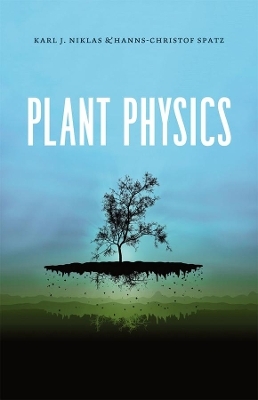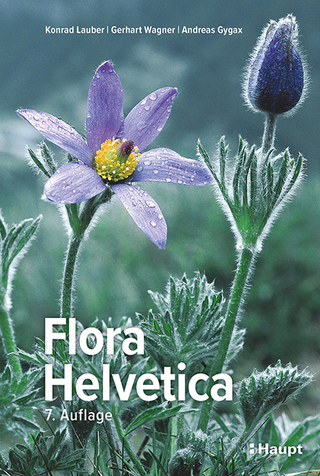
Plant Physics
Seiten
2014
University of Chicago Press (Verlag)
978-0-226-15081-9 (ISBN)
University of Chicago Press (Verlag)
978-0-226-15081-9 (ISBN)
Presents a detailed account of the principles of classical physics, evolutionary theory, and plant biology in order to explain the complex interrelationships among plant form, function, environment, and evolutionary history.
From Galileo, who used the hollow stalks of grass to demonstrate the idea that peripherally located construction materials provide most of the resistance to bending forces, to Leonardo da Vinci, whose illustrations of the parachute are alleged to be based on his study of the dandelion's pappus and the maple tree's samara, many of our greatest physicists, mathematicians, and engineers have learned much from studying plants. A symbiotic relationship between botany and the fields of physics, mathematics, engineering, and chemistry continues today, as is revealed in Plant Physics. The result of a long-term collaboration between plant evolutionary biologist Karl J. Niklas and physicist Hanns-Christof Spatz, Plant Physics presents a detailed account of the principles of classical physics, evolutionary theory, and plant biology in order to explain the complex interrelationships among plant form, function, environment, and evolutionary history.
Covering a wide range of topics - from the development and evolution of the basic plant body and the ecology of aquatic unicellular plants to mathematical treatments of light attenuation through tree canopies and the movement of water through plants' roots, stems, and leaves - Plant Physics is destined to inspire students and professionals alike to traverse disciplinary membranes.
From Galileo, who used the hollow stalks of grass to demonstrate the idea that peripherally located construction materials provide most of the resistance to bending forces, to Leonardo da Vinci, whose illustrations of the parachute are alleged to be based on his study of the dandelion's pappus and the maple tree's samara, many of our greatest physicists, mathematicians, and engineers have learned much from studying plants. A symbiotic relationship between botany and the fields of physics, mathematics, engineering, and chemistry continues today, as is revealed in Plant Physics. The result of a long-term collaboration between plant evolutionary biologist Karl J. Niklas and physicist Hanns-Christof Spatz, Plant Physics presents a detailed account of the principles of classical physics, evolutionary theory, and plant biology in order to explain the complex interrelationships among plant form, function, environment, and evolutionary history.
Covering a wide range of topics - from the development and evolution of the basic plant body and the ecology of aquatic unicellular plants to mathematical treatments of light attenuation through tree canopies and the movement of water through plants' roots, stems, and leaves - Plant Physics is destined to inspire students and professionals alike to traverse disciplinary membranes.
Karl J. Niklas is the Liberty Hyde Bailey Professor of Plant Biology in the Department of Plant Biology at Cornell University. He is the author of Plant Biomechanics, Plant Allometry, and The Evolutionary Biology of Plants, all published by the University of Chicago Press. Hanns-Christof Spatz is professor emeritus of biophysics in the Faculty of Biology at the Albert-Ludwigs-Universitat Freiburg in Germany.
| Erscheint lt. Verlag | 4.3.2014 |
|---|---|
| Sprache | englisch |
| Maße | 162 x 238 mm |
| Gewicht | 652 g |
| Themenwelt | Naturwissenschaften ► Biologie ► Botanik |
| Naturwissenschaften ► Physik / Astronomie ► Angewandte Physik | |
| ISBN-10 | 0-226-15081-X / 022615081X |
| ISBN-13 | 978-0-226-15081-9 / 9780226150819 |
| Zustand | Neuware |
| Haben Sie eine Frage zum Produkt? |
Mehr entdecken
aus dem Bereich
aus dem Bereich
Gefäßpflanzen: Grundband
Buch | Hardcover (2021)
Springer Spektrum (Verlag)
44,99 €
ein Baum erzählt seine erstaunliche Geschichte
Buch | Hardcover (2024)
Ludwig (Verlag)
23,00 €


